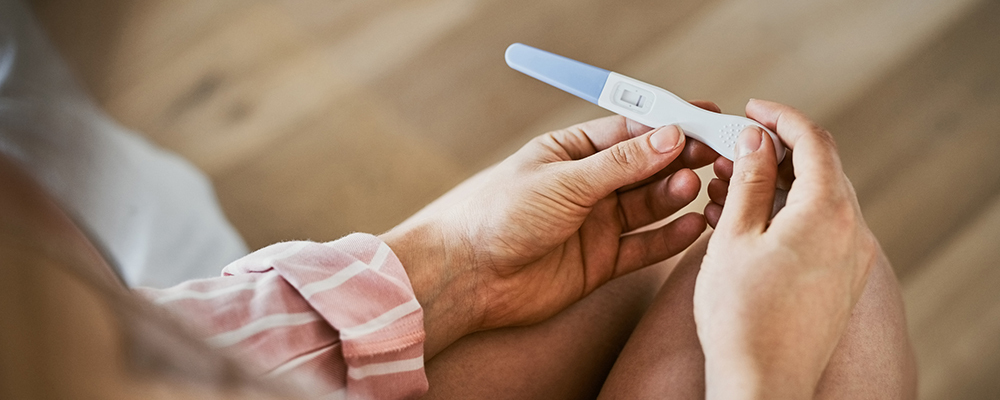[vc_row][vc_column][vc_column_text woodmart_inline=”no” text_larger=”no”]If you’re already familiar with PCOS, you’ve probably heard it used interchangeably with PCOD. Maybe you’ve even been calling it PCOD all this while. After all, potayto, potahto, right? Well, not really. PCOD happens to be an outdated acronym for the health condition that is PCOS. But are you confused about what these acronyms even mean? Don’t worry because we’re here to decode them for you![/vc_column_text][/vc_column][/vc_row][vc_row][vc_column][vc_column_text]
PCOD vs PCOS
Earlier, polycystic ovarian syndrome or PCOS was incorrectly called polycystic ovarian disease or PCOD. The term was first described in 1935 by Stein and Levinthal, and it used to be called Stein-Levinthal Syndrome. At that time, they noted patterns between obesity, irregular periods and hirsutism.
Today, however, scientists call it a syndrome since it’s a group of symptoms rather than a “curable” disease. Women with this condition usually display a mix of symptoms, but not necessarily all of them.
So the next time you hear someone giving an explanation about PCOD and PCOS difference, tell them it’s the same thing!
[/vc_column_text][/vc_column][/vc_row][vc_row][vc_column][vc_column_text]
What is PCOS exactly?
PCOS is one of the most common hormonal disorders there is. Typically, it is characterized by irregular periods, ovarian cysts and excessive male hormones. This hormonal imbalance can prevent the ovaries from releasing an egg and lead to metabolic and reproductive issues (like obesity, diabetes, high cholesterol, high blood pressure, infertility, and uterine cancer).
[/vc_column_text][/vc_column][/vc_row][vc_row][vc_column][vc_column_text]
Symptoms and Diagnosis
There are various criteria for diagnosing PCOS, which is confusing not only for patients but also for doctors. Currently, scientists and experts collectively prefer the Rotterdam Criteria for diagnosing PCOS.
The Rotterdam Criteria states that 2 out of 3 of the following criteria are required to make the diagnosis:
- Irregular periods (see our article about normal periods)
- Excessive male hormones (e.g., seen as abnormal hair growth or acne)
- Many small cysts in the ovaries
[/vc_column_text][/vc_column][/vc_row][vc_row][vc_column][vc_column_text]
PCOS symptoms can show up differently and vary among women, however, if you are experiencing any of these symptoms or suspect having, it is best to speak to a doctor:
- Sudden weight gain or obesity
- Excess hair on the face or body
- Trouble conceiving
- Severe acne or oily skin
- Hair loss
- Mood disorders
- Darkening and thickening of the skin in certain areas (particularly the armpits and neck)
[/vc_column_text][/vc_column][/vc_row][vc_row][vc_column][vc_column_text woodmart_inline=”no” text_larger=”no”]A gynaecologist usually diagnoses PCOS through a physical exam, ultrasound screening (for ovarian cysts) and blood tests. In some cases, PCOS can be diagnosed based on the patient’s history and physical exam alone. However, to verify a PCOS diagnosis, other conditions that mimic PCOS must be excluded (e.g., thyroid disease and androgen-secreting tumours).[/vc_column_text][vc_column_text]
What are the complications of PCOS?
[/vc_column_text][vc_column_text]
Leaving PCOS untreated can lead to a range of serious and expensive health complications. Nearly 70% of women with PCOS suffer from insulin resistance which increases their risk of developing type 2 diabetes in future if not controlled early on. Underlying insulin resistance can also lead to weight gain, obesity and gestational diabetes (diabetes during pregnancy). Irregular periods, which is a common symptom of PCOS, can over time increase the risk of infertility and even endometrial cancer.
[/vc_column_text][vc_column_text]
Summary
[/vc_column_text][vc_column_text]
To sum up, PCOS and PCOD is the same thing! PCOD is an outdated term that doctors and medical professionals no longer use. PCOS is not a ‘disease’ as it does not have a definite cause, symptoms and cure. Instead, it is a hormonal disorder with a set of symptoms, which can cause severe health problems when left untreated. To diagnose it early and get a treatment customised for you, always consult a doctor.
[/vc_column_text][/vc_column][/vc_row]


















